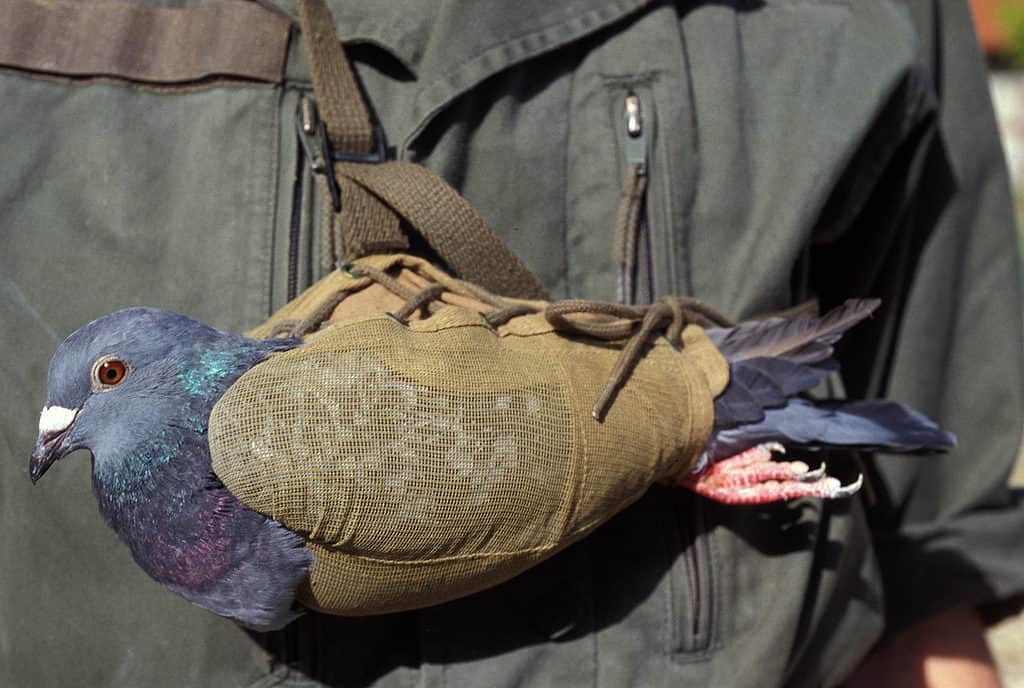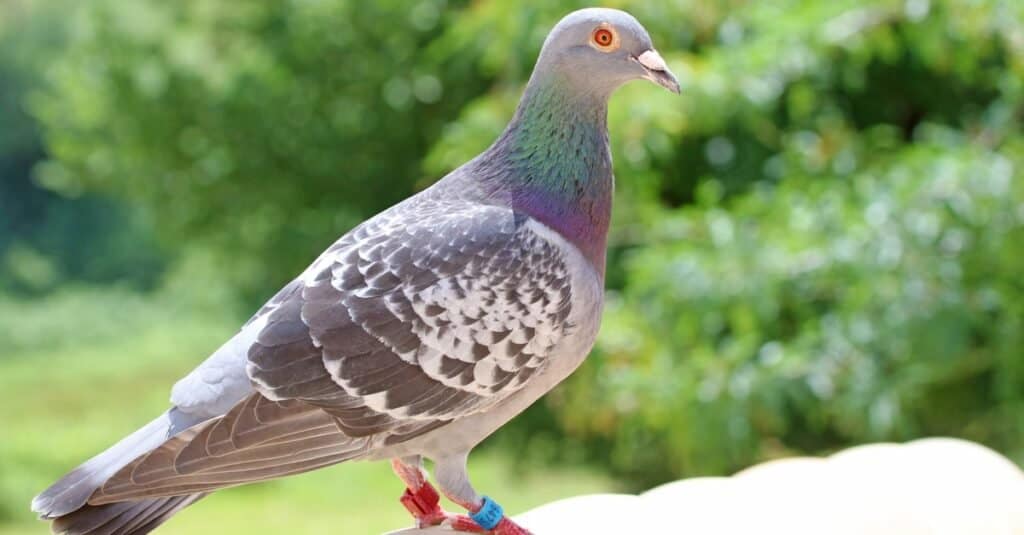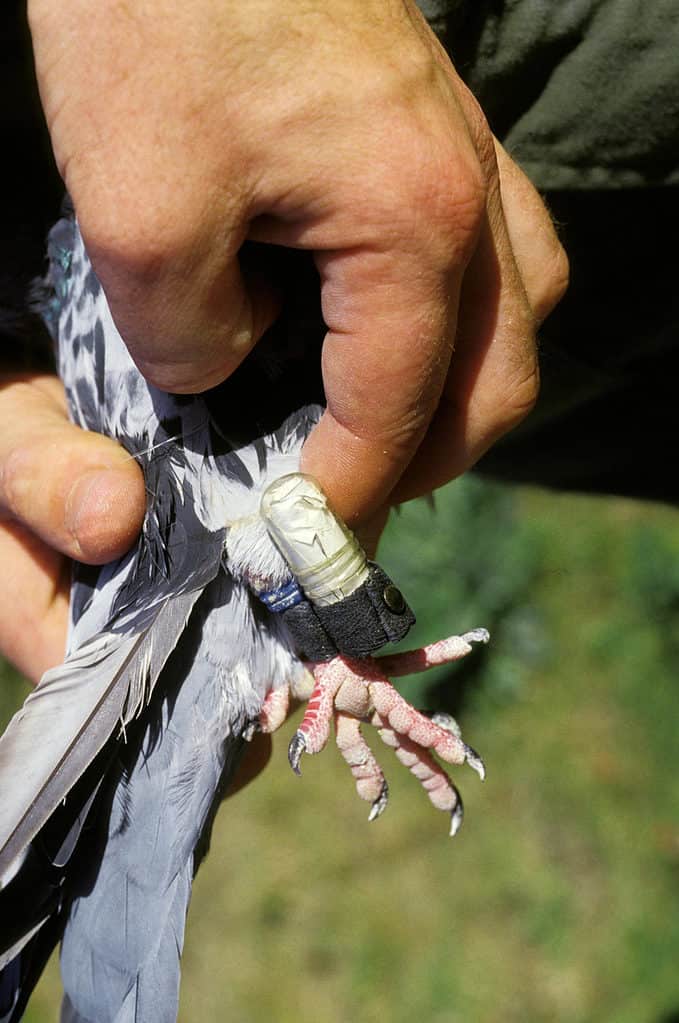Before the use of modern communication devices like phones and computers, people sent physical hand-written messages. And sometimes, when it wasn’t feasible for humans to deliver communications, birds were used to transport essential relays. Discover all types of messenger birds, including their roles and history.
What is a Messenger Bird?

People have used birds for centuries to deliver messages. People brought birds with them and attached a note before releasing it in the wild.
©iStock.com/slowmotiongli
Throughout history, birds have been used to carry messages from one person to the next. People have used them in most parts of the world for thousands of years, with the most recent usage in the early 2000s in parts of India. People would bring cages of birds with them to their destination and attach a note to the bird before releasing it in the wild. The bird would find its way back home, and the people on the receiving end would take the message from the bird.
How Do Messenger Birds Know Where To Go?
Messenger birds have an innate homing ability that allows them to find their way home no matter where they are. There has been much debate through the decades about how birds, like homing pigeons, can find their way back. Some believe they have iron particles in their beaks, which allow them to detect the earth’s magnetic fields. While others theorize olfactory navigation could play a role. For now, there is no definitive answer as to how messenger birds know where to go. But people have used their keen senses for centuries, releasing them with important messages and relying on them to find their way home.
Types of Messenger Birds

Homing pigeons are derived from the wild rock dove and selectively bred. People used domesticated pigeons for sending post.
©Ruth Swan/Shutterstock.com
The pigeon is the most common and widely used messenger bird. In fact, it is the only species used as a messenger bird. Due to their homing abilities, they are reliable and accurate in delivering essential communication. Homing pigeons are derived from the wild rock dove and selectively bred. People used domesticated pigeons for sending regular post or during times of war. These birds existed to deliver mail until modern communication emerged.
Movies and shows, like Game of Thrones, often depict ravens and crows as reliable messengers, but this is simply false. They are extremely intelligent birds associated with bringing spiritual or supernatural messages. But they were never used for bringing physical messages, as it goes against their natural behavior. People could potentially train them, but pigeons are already a viable option.
History of Homing Pigeons
Pigeon posts have existed since 3000 BC in Egypt. Ancient Egyptians knew that pigeons would find their way back to their nests no matter how far they traveled. Ancient Greece would use carrier pigeons to announce the winner of the Olympic Games. Even Genghis Khan used pigeons to send messages. By 1167, a permanent pigeon service existed to send messages between Baghdad and Syria. In 1860, the founder of Reuters had a fleet of pigeons, and by the late 1800s, people had trained them to make round trips. New York City newspaper agencies used them to get information all the way from Europe during the 19th century. Homing pigeons still existed in the 21st century in India. They used them to deliver emergency messages after natural disasters. The last pigeon post was disbanded in 2002 following the surge of the internet.
Roles of Homing Pigeons

The postal carriage was the most common role of using a pigeon post.
©iStock.com/slowmotiongli
The postal carriage was the most common role of using a pigeon post. People would roll thin pieces of paper into a tube and attach them to the pigeon’s leg. In the 1900s, people had trained pigeons to carry heavier items, like medication and laboratory specimens, between hospitals.
Pigeons played vital roles during war, and people used them extensively during the first and second world wars. Many even received awards for their heroic efforts in delivering messages of life and death while being wounded themselves.
Unfortunately, like with many good things, they can be used for bad. People also used homing pigeons for smuggling items, like narcotics, across borders, and into prisons. A prison in Brazil used pigeons as late as 2015 to smuggle cell phones, SIM cards, and chargers.
People also use pigeons for racing. However, organizations like PETA, have widely criticized this practice, citing animal exploitation and negative implications on the pigeon’s welfare.
The photo featured at the top of this post is © iStock.com/Frank Cornelissen
Thank you for reading! Have some feedback for us? Contact the AZ Animals editorial team.






